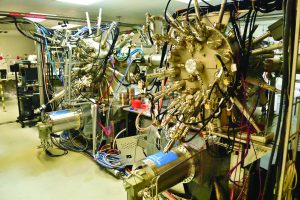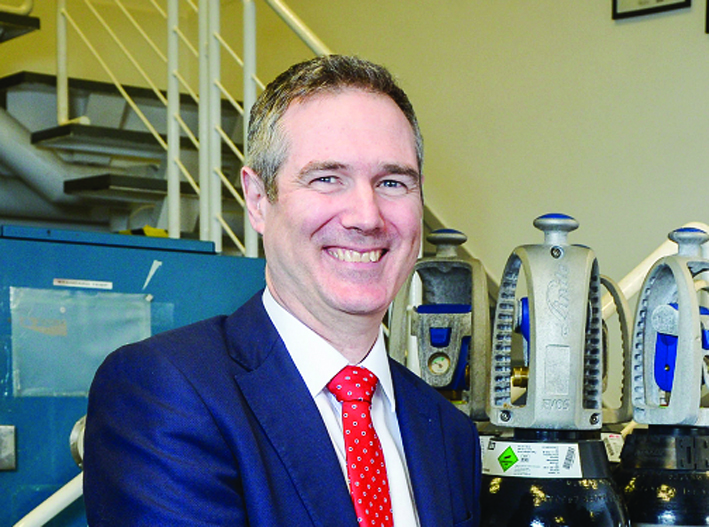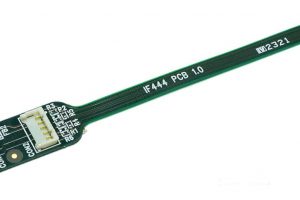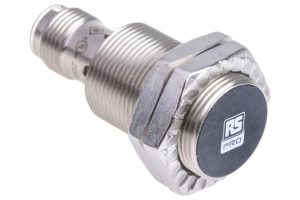To most people carbon dioxide (CO2) is a ‘greenhouse gas’, but not directly harmful to humans. We breathe it out, plants take it in for photosynthesis.
Whereas miners once took canaries into the mines to alert them to the need to escape a build-up of the gas in the tunnels where they worked, nowadays, there are many more places where poorly ventilated enclosures could lead to dangerous levels of CO2.
The effects of elevated CO2 levels on human health and performance, for instance in submarines and spacecraft, office blocks and factories, are now recognised.
Changes in CO2 levels have a dramatically greater harmful effect than similar changes in oxygen levels. High levels result in yawning and dizziness, followed by unconsciousness and finally death if humans breath CO2 at only 9% concentration for just five minutes.
The natural level in the air is around 400 parts per million (ppm). In a closed room containing several people this can rapidly rise to 2,000ppm. A meeting might be boring, but the probable reason people are yawning is not lack of oxygen, but the body reacting to high levels of CO2.
Replacing the canary
Humans are not good at detecting rising CO2 levels. We exhale at around 50,000ppm (5%), so it is hard to notice levels in the incoming air which, at much lower concentrations, can affect our health.
Breathing in and out of a paper bag to stop hiccups works because the increased level of CO2 stored in the bag with every exhalation, which is then inhaled, triggers a reflex to increase the breathing rate. This in turn reduces CO2 levels, which counteracts the hiccups.
Virtually all modern CO2 detectors use non-dispersive infra-red (NDIR) technology that works by infra-red (IR) passing through the sample gas. CO2 molecules absorb in the mid range of IR – between 4.2µm and 4.4µm wavelengths – so the level of the absorbtion of these wavelenghts indicates the levels of CO2 present.
Traditionally the source of this IR is a filament, not unlike those found in old-fashioned light bulbs. Essentially, this hot source produces a range of IR radiation which must then be filtered to only send the 4.2µm-4.4µm wavelengths through the sample.
This method wastes substantial energy, and heat issues can distort the readings. In addition, it usually takes between several minutes and half an hour for the source to heat up and stabilize, using time and energy. The sources are fragile and do not last very long compared with the LED‑based lamps that replaced light-bulbs.
With an infra-red-tuned LED?
So could the source be an LED? They use much less power and turn on and off almost instantly, so there would be no wasted energy, and rather than producing a whole range of wavelengths, most of which are not needed, LEDs can be tuned to produce specific wavelengths. It is easy to make LEDs for the visible spectrum and there is huge commercial demand, but only the military use mid range IR LEDs.
So when UK start-up Gas Sensing Solutions (GSS) wanted to use LEDs in CO2 sensors, it found no commercial manufacturers of mid range IR LEDs. It solved this problem by developing its own processes to manufacture them, along with matching photodiodes that are specifically tuned to 4.2µm-4.4µm wavelengths.
GSS invested in its own epitaxy machines so that it could control the manufacture of these key components in-house. This approach also provides the company with a barrier to entry for rivals trying to make LEDs.
The biggest market for CO2 monitors is currently air quality monitoring, for HVAC (heating ventilation and control). People typically think this is about bringing fresh air/oxygen into a building.
In fact removing the CO2 is far more important, and legislation is being introduced to set maximum levels in offices, factories, homes and schools to protect health.
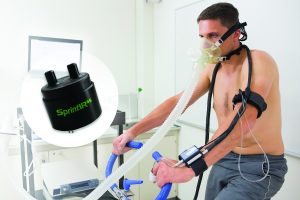
Figure 2: Portable breath analysis machines can be made at a fraction of the cost of current models – GSS’ SprintIR6S CO2 sensor that takes 20 measurements per second is also portable
The US Occupational Safety and Health Administration (OSHA) has set a permissible exposure limit (PEL) for CO2 of 5,000ppm (0.5%) in an eight‑hour working day. It reports that exposure to levels of CO2 above this can cause problems with concentration, an increased heart rate, breathing issues, headaches and dizziness.
Keeping an eye on costs
However, changing the air produces an energy cost. In addition, heating or cooling the air might not be necessary if there is no one present, such as at night time or at weekends.
It is easy to build in mains‑powered CO2 sensors to air quality systems in new builds that have the appropriate power and networking cables. But to retro‑fit buildings, battery-powered LED CO2 detectors can solve the problem more cost effectively, avoiding the costs of cabling and redecorating after installation.
An LED CO2 sensor uses so little power that it can run for up to 10 years on a small lithium battery with enough power left over for a wireless control connection. Even for new builds, such installation cost savings can make battery-powered sensors a cost-effective choice. What’s more, they provide a future‑proof solution that can be easily adapted as room use changes.
Another major area for CO2 monitors is industry. For example, high levels of the gas are used to keep food, such as sealed packages of meat and bagged salads, fresher for longer.
On the production line, a sensor is needed to measure that the bags are being sealed with the right level of CO2, which can be up to 100% concentration. The sensor must be able to work on small sample volumes and produce a result very quickly.
GSS’s SprintIR6S sensor needs less than 2ml of sample gas and can produce a reading in a fraction of a second. Waiting minutes for a reading of a sampled bag can result in many bags being processed incorrectly before the fault is noticed and corrective measures instigated on the production line.
Until LED versions became available, CO2 monitoring for these concentrations of 20% to 100% was the province of expensive specialised detectors.
A CO2 leak in such facilities or others that use the gas can rapidly take a normal level of around 400ppm up to levels where dizziness and disorientation can take hold. So having CO2 sensors in the 0% to 5% range provides a vital health and safety warning – and having a sensor that takes one second to provide that warning, rather than many minutes, can save lives.
An all-too-often example is found in restaurants, microbreweries, and bars where the cellar is used to store the CO2 cylinders used to carbonate drinks. A CO2 leak collects in the cellar and builds up to levels that incapacitate anyone who goes down there. This deadly trap can claim several victims, as more people go down to investigate what happened to the previous person.
The next generation of LED CO2 monitors changes the game – it’s a disruptive technology. Power reduction of between 10x and 100x means that they can be battery-powered. Measurements take a fraction of a second, not many seconds or minutes, giving almost instant warnings. This paves the way for applications that were previously impossible. For example, monitors can be added to mobile phones or low-cost portable CO2 monitors created for fitness applications.
Sensors can check the CO2 level in car cabins to prevent drowsiness and accidents, especially since CO2 is being proposed for use as a refrigerant in car air conditioning systems, raising the risk of leaks into the cabin.
 Electronics Weekly Electronics Design & Components Tech News
Electronics Weekly Electronics Design & Components Tech News
